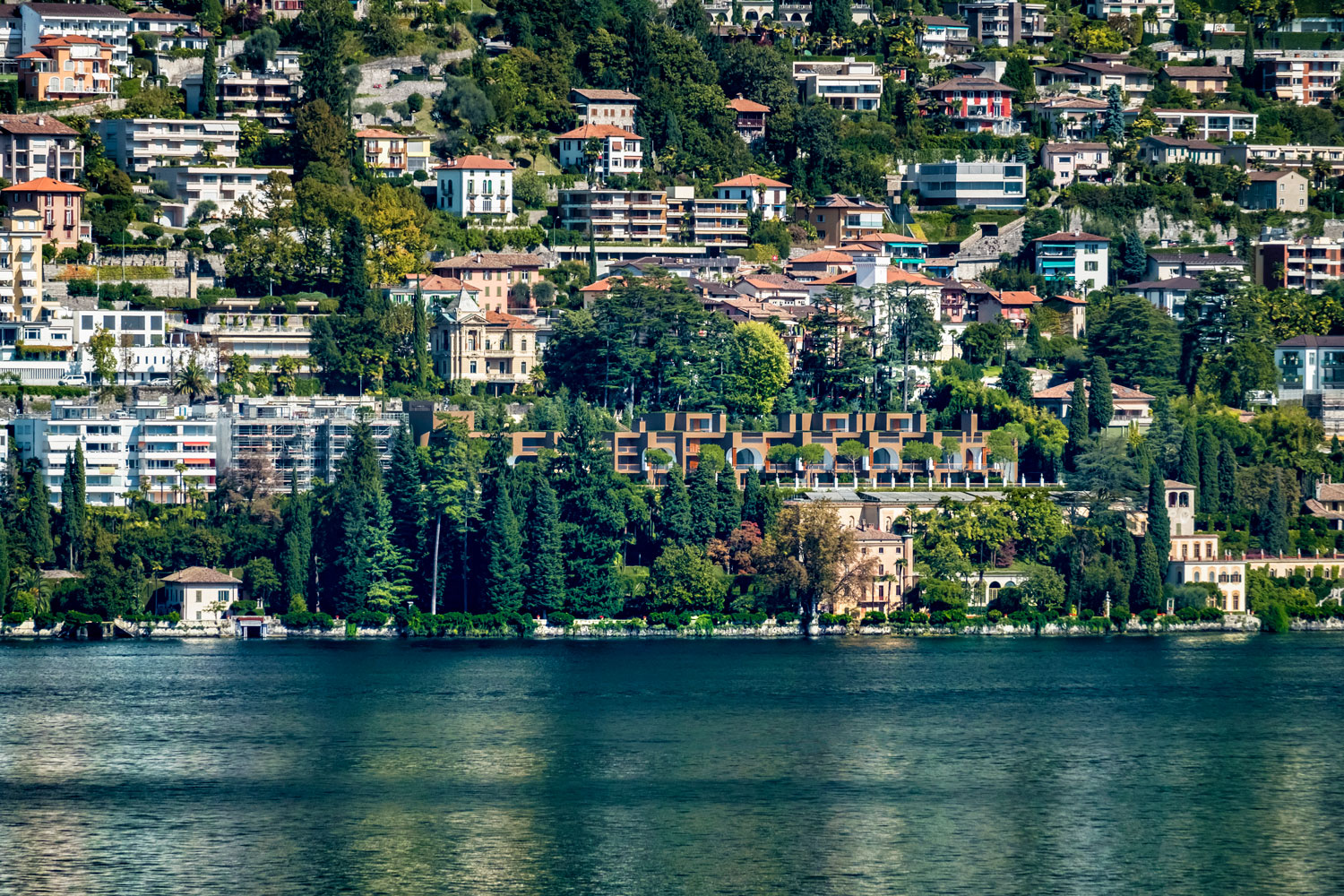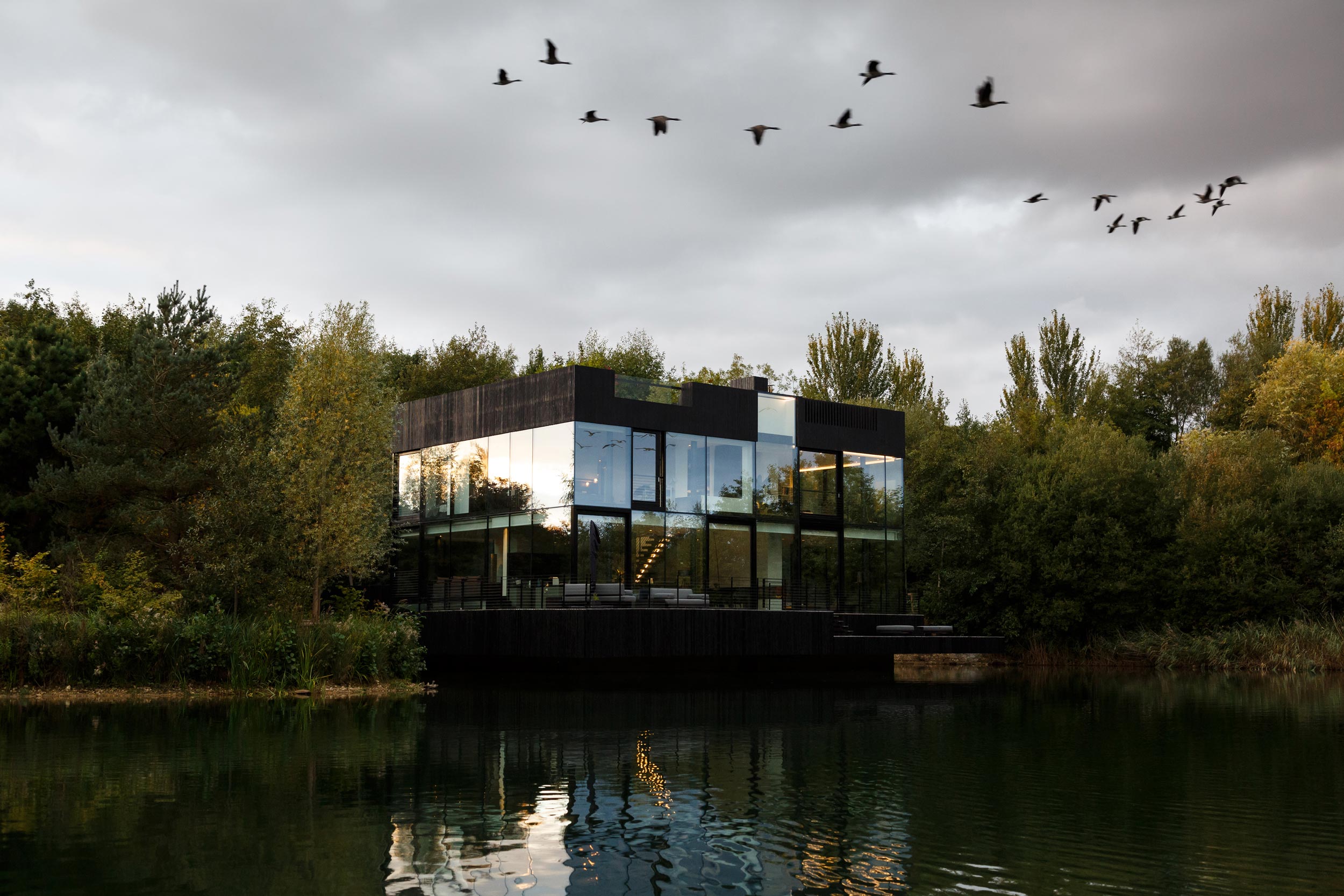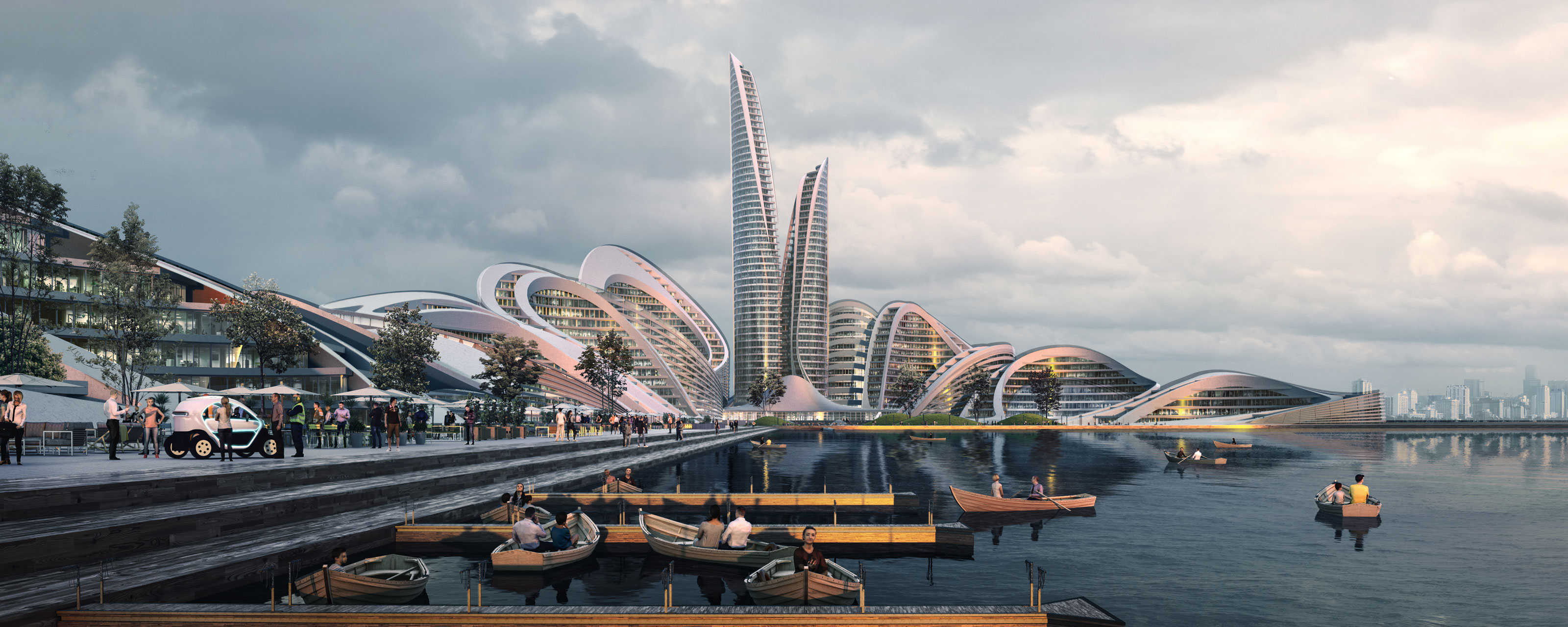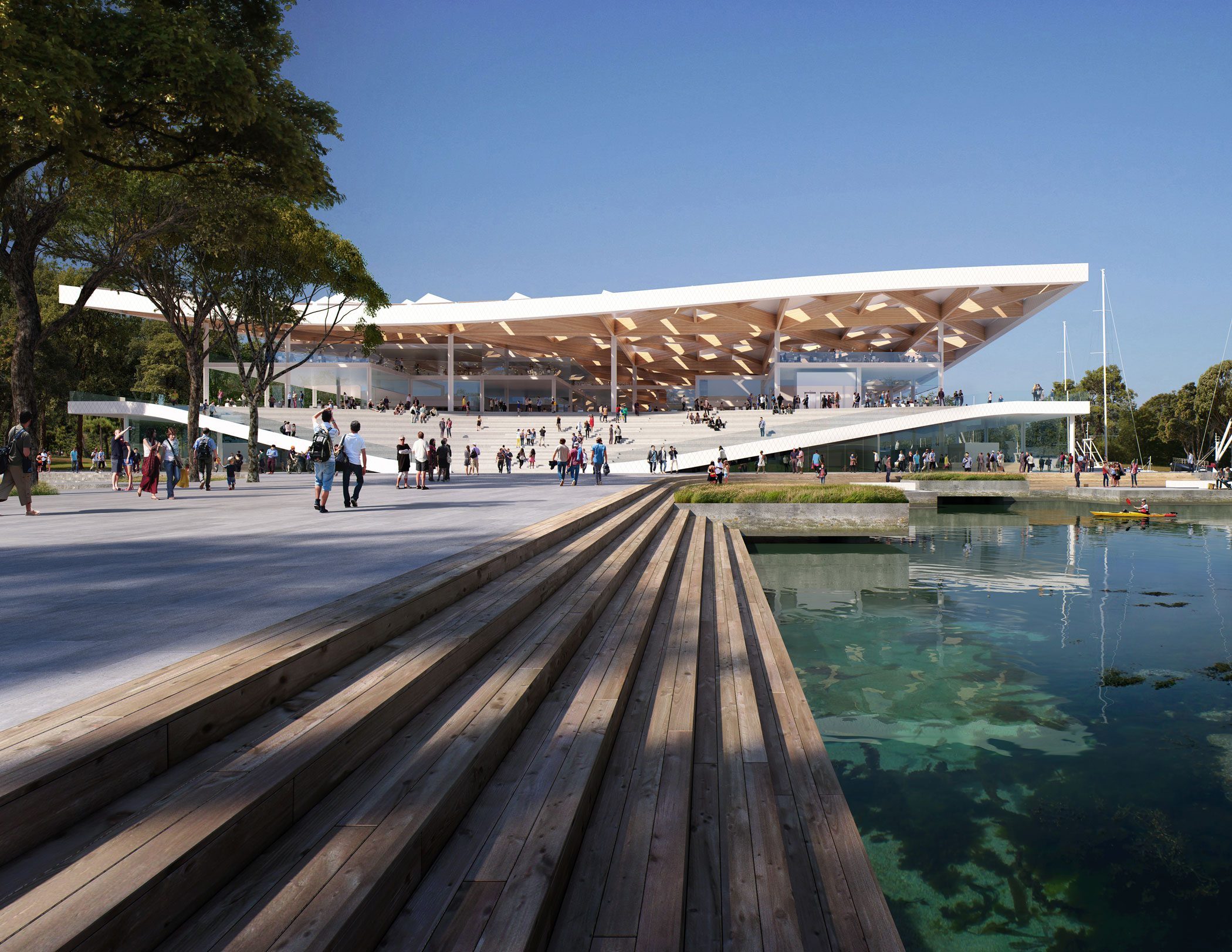
SYDNEY FISH MARKET | 3XN Architects
Description provided by 3XN Architects. The harbor is synonymous with Sydney. It is, perhaps, the city’s most recognizable and beautiful feature. The harbor’s edge is dotted with landmarks that showcase its rare natural beauty and reinforce its relevance around the world – Sydney Opera House, Sydney Harbor Bridge, Woolloomooloo Wharf, Jones Bay Wharf, Barangaroo, and Darling Harbour. As a continuation of iconic destinations connected by the foreshore promenade, the new Sydney Fish Market will take its place at the head of Blackwattle Bay.
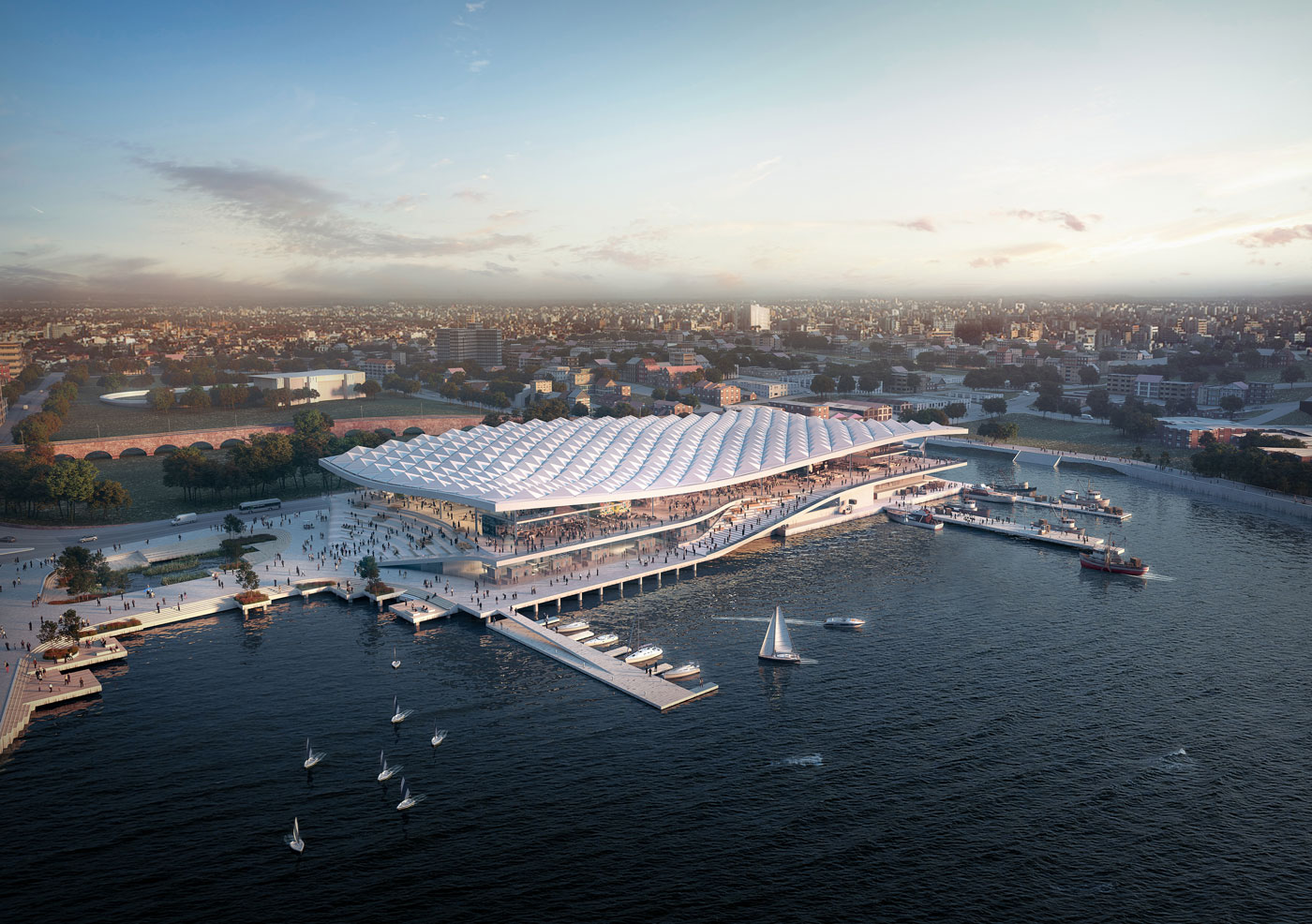
The Sydney Fish Market, currently housed in a series of old warehouses and post-industrial buildings, is one of the most significant communities and tourist destinations in the city. 3XN has approached this project with the specific goal of creating a fish market that is much more than just a fish market. The building will serve many purposes when it is finished – a working fish market, an amenity for the city, a cultural destination, an urban connector, and an inspiring icon along the world-renowned Sydney Harbour.
In designing this new building, 3XN was inspired by the traditional market archetype, which appears throughout history and across cultures. The market is the social hub of cities around the world; it is generally comprised of a series of stalls that are open to the air but covered in a canopy and located in a large plaza. The new site of Sydney Fish Market is a 3.6-hectare site at the head of Blackwattle Bay. The design capitalizes on the opportunity to link the bay with Wentworth Park to the south, and the entire community with this cultural icon.
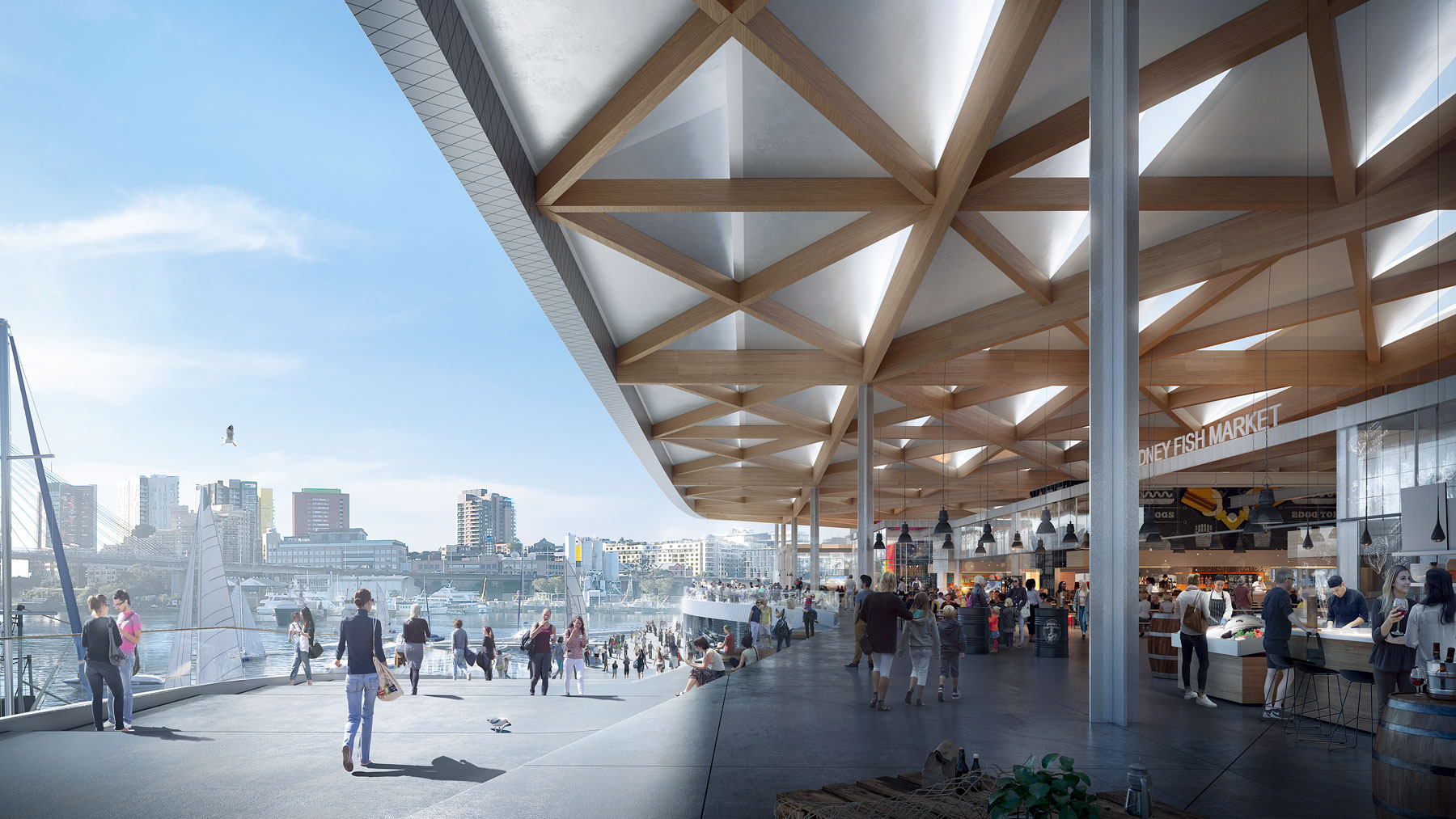
As a significant community and visitor destination, the new Sydney Fish Market will facilitate interaction by combining a vast amount of public space with an authentic market. As a working seafood market and wholesale operation, the new facility must support these functions in an uninterrupted way. The new facility goes beyond its immediate role of the sale and distribution of seafood and provides an array of varied experiences that enable change and responsiveness to the future, creating a destination for locals and tourists alike that is an integral part of the city fabric.
The existing fish market has a conflict of functions. Like all other fish markets in the world, visitors come to get a sense of the behind the scenes activities, but this interrupts the daily operations. In response, some markets have had to limit visitors. For this building, 3XN has physically separated the operational aspects from the public ones, while allowing visual connections between the two. In the new building, the ground floor hosts all the functions traditionally associated with fish markets – the landing and loading of fish, the wholesale market, and the auction hall.
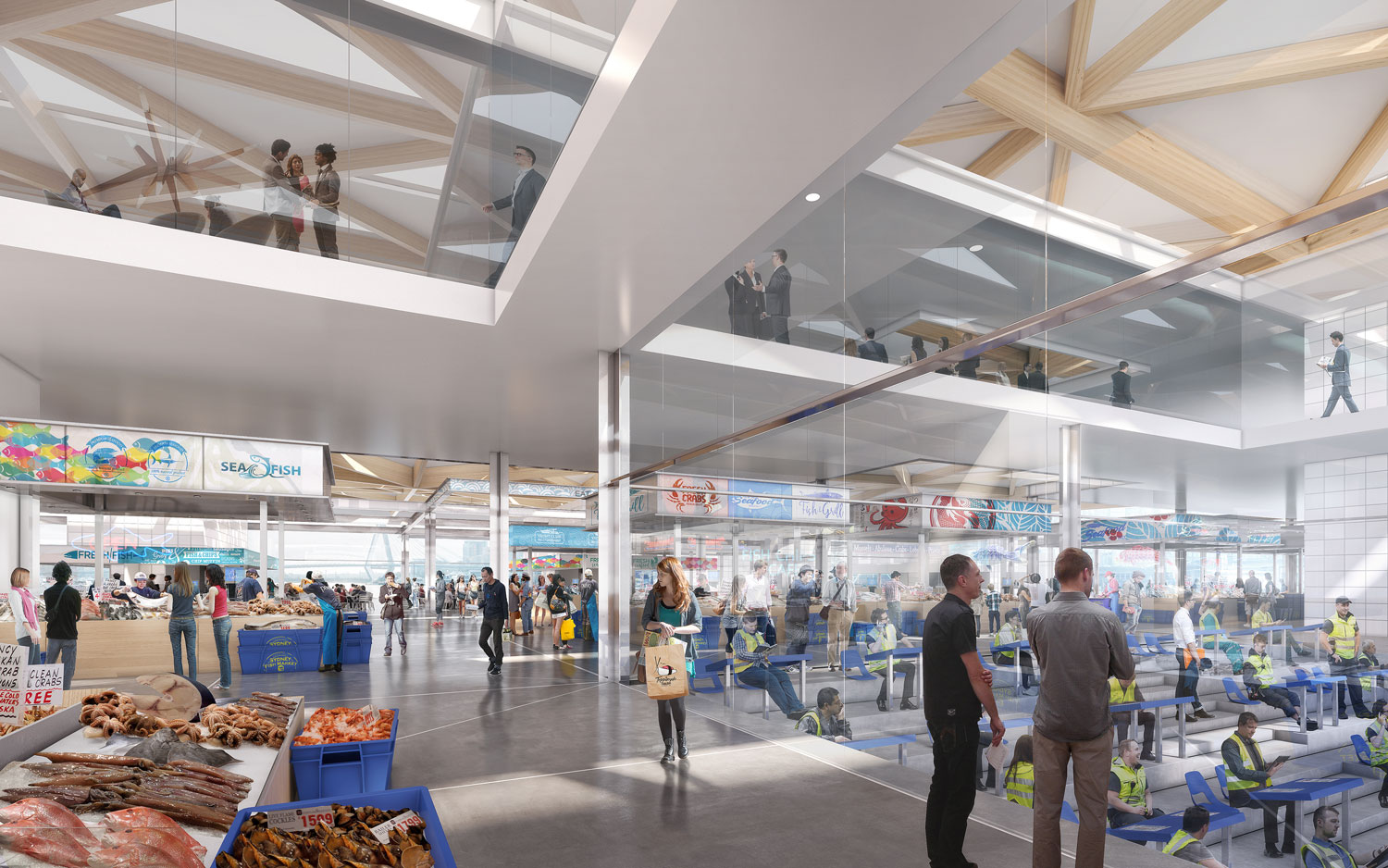
The staircases that lead from the plazas to the upper ground are a continuation of the surrounding landscape and act as an invitation for people to enter the market. The stairs also double as seating, creating a public space where people can enjoy their food and the view over the bay.
The upper ground houses fresh seafood retailers, restaurants and cafés. The design focuses on maintaining a human scale and creating a true market atmosphere – just like historic marketplaces or bazaars with a series of small stalls that are connected. The aim is to create an intimate market atmosphere.
A sweeping timber-and-aluminum roof floats over the building like a canopy; it ties all the various program elements together in one elegant move while giving the building an iconic presence along the harbor. The wavy structure is a response to the underlying functions; it rises and falls to correspond with the program below. Beyond design, the roof has four primary efficiency and sustainability attributes: shading, daylighting, ventilation, the collection of rainwater and the possibility for solar cells harvest the strong Sydney sun. The roof’s triangular openings allow abundant natural light into the building, while their orientation shades the building from the harshest sun. The market has been designed to be as permeable as possible to maximize natural ventilation and minimize the need for air conditioning. The design utilizes the roof’s geometry for rainwater collection and recycling.
The new Sydney Fish Market aims to be more than a fish market, it will be a gathering place for Sydneysiders and visitors alike.
Environmental and social sustainability is an essential and inseparable part of the design. The roof, landscape forms, open atmosphere, plantings and materials that characterize the experience of the design and being at the market are embedded in the form and not features added at the end. Throughout the course of the concept and design development, public amenity and environmental sustainability have formed the core of the decision-making processes.
With very clearly articulated, and very ambitious, sustainability goals that include a 50-percent reduction in energy consumption, a 50-percent reduction in water consumption, and a 50-percent reduction in waste compared with the existing fish market, this new building has sustainability at its core. The new fish market maximizes its water recycling potential by a combination of rainwater harvesting and greywater recycling, bio-filtration, and mechanical filtration and sterilization for the daily operations like washdown. Biological and mechanical water quality systems are an integral part of the design of the new fish market, focused on conserving the valuable resource.
A comprehensive energy optimization strategy has been employed to reduce consumption
and demand while producing energy from renewable sources. The strategy includes the
possibility for absorption chillers to turn excess heat from refrigeration into cold water for cooling, use of excess heat sources to power the hot water system and space heating. The potential use of leftover ice to pre-cool air for refrigerated areas. Passive conditioning utilizes canopy shading, wind capture, thermal mass and excess cool air from other zones to create a comfortable environment with minimal reliance on active conditioning systems.
Plantings and bio-filtration zones across the site will form a ‘green bridge’, offering native fauna habitat and access to the water with local ora providing a natural water purification and filtration of the site run-off.
The waste systems employed in the new fish market aim to recycle all industrial food-waste. A comprehensive strategy for all recyclables will be instituted and managed to optimize consumables and the sh market will reprocess materials used in packaging and operation.

